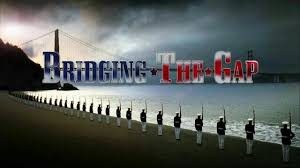Where Have The Civil-Military Connections Gone?
It was across the road from the only drive-in hamburger stand in town. It was where we as kids looked through the fence at the big Army trucks parked behind the tall roof building. We held high school dances there.
It was the National Guard Armory, one of many in towns across America built after Pearl Harbor, and it was the home of an Army transportation company. It was the place which visibly connected the military to the community.
It’s gone now. So is the connection. Like other armories in towns across America, cost efficiency has dictated consolidation into big bases.
If the loss of armories is a visible sign of changing times, so is the Army-Navy game. When the Cadets and Midshipmen march into the stadium before the game, we watch the faces of people who are becoming personally involved in protecting America.
Here in Atlanta, many of us personally know an active duty serviceman or servicewoman…or the family of one.
Not so across America. Participation or connection to the military is being lost in some significant categories. The Pew Research Center has found that while a majority of older Americans have family connections, only a third of the 18-29 year-olds do.
Most of our military today comes from rural areas and the South. Nearly half of the active duty members live in just five states: California, Virginia, Texas, North Carolina, and Georgia.
Most of our military today comes from middle income families; high income and low income families are increasingly not represented.
Thus the military community is becoming more insular. The connection between most Americans and our armed forces is fading away. We may publicly say thanks for their service, but we have no real family or personal connection.
In losing the personal connection built following Pearl Harbor, many Americans no longer are really concerned with how our military is used. We should be.
When the nation goes to war, so should the American people. Over the past few decades of America at war, the attitude of “we shop while they fight” is the norm. No tee time has been affected.
Pearl Harbor and the Army-Navy Game should remind us to vote carefully on how our military is used.
Andrew Bacevich in the September/October issue of the Foreign Affairs magazine makes some interesting suggestions. To keep the connection, he proposes that anytime America goes to war, like Iraq or Afghanistan, we put in place a special tax to pay for it.
He suggests a smaller standing all-volunteer Army, but a larger reserve consisting of individuals DRAFTED from across America’s demographics and geography. Draftees would represent various race, gender, ethnicity, region, class, and family incomes of American society. No exemptions.
Make changes like this and Americans will come up close and personal with the use of our military. Voters will take into account how and why America’s military is being used. Insuring America’s future will result
Pearl Harbor, where casualties were greater than for Americans in all of WW I, should cause to think about our military in a way that is above just saying thanks to its survivors.
The Army-Navy game, when the cameras show the faces of the midshipmen and cadets, should makes us think about how each of us should be personally involved in the defense of our freedoms.
Freedom will require American’s military and civilians to stay connected.

